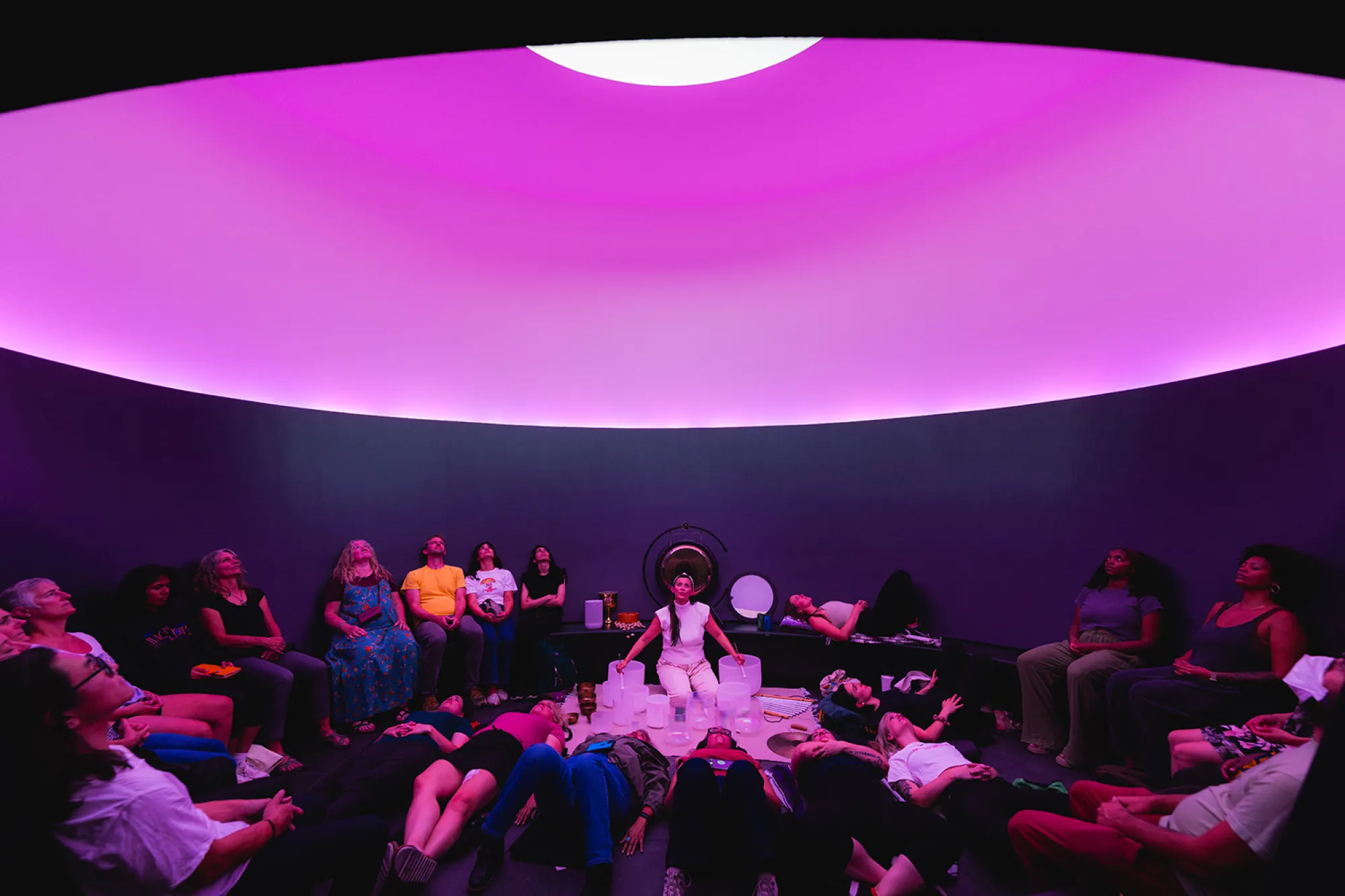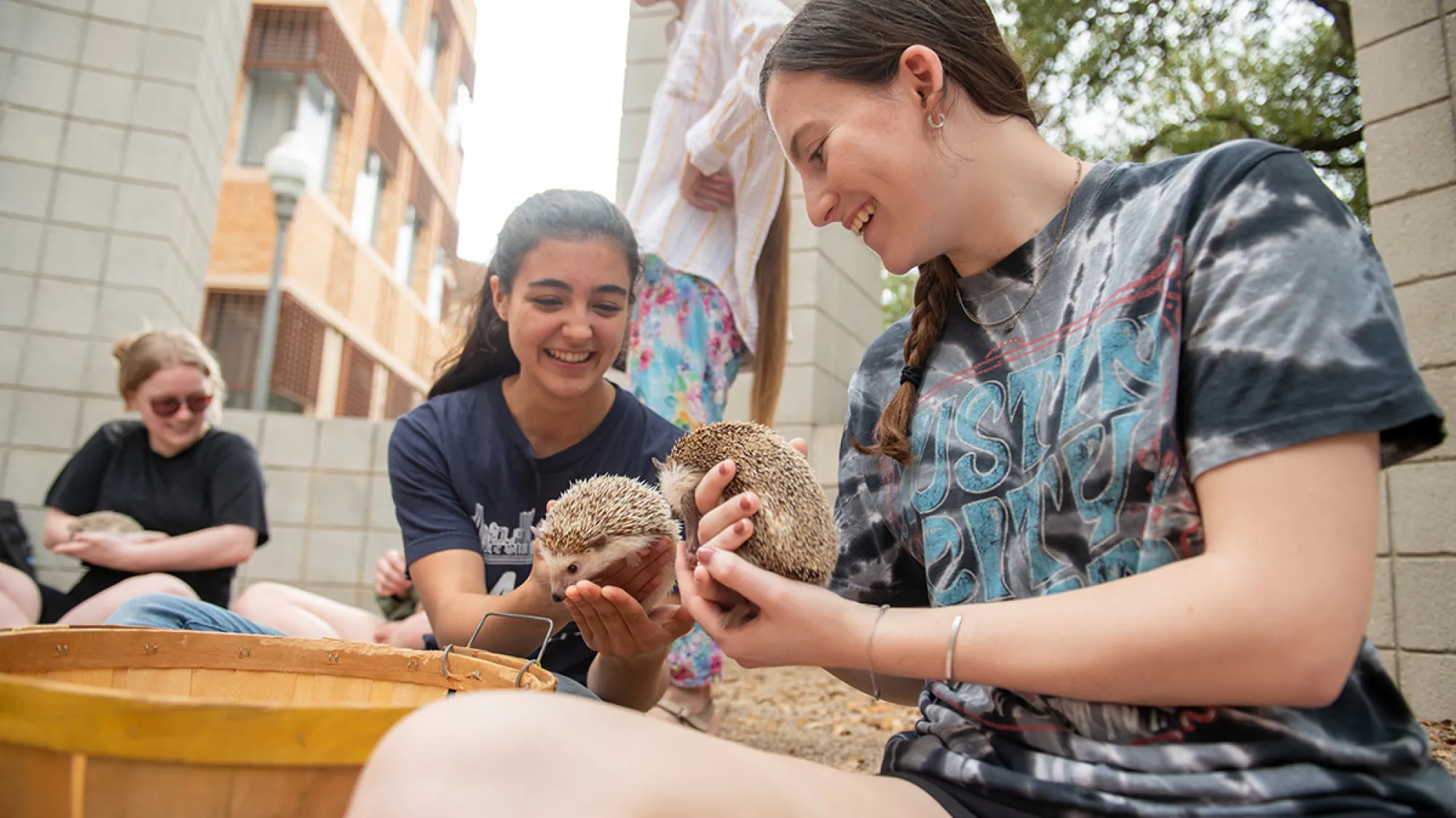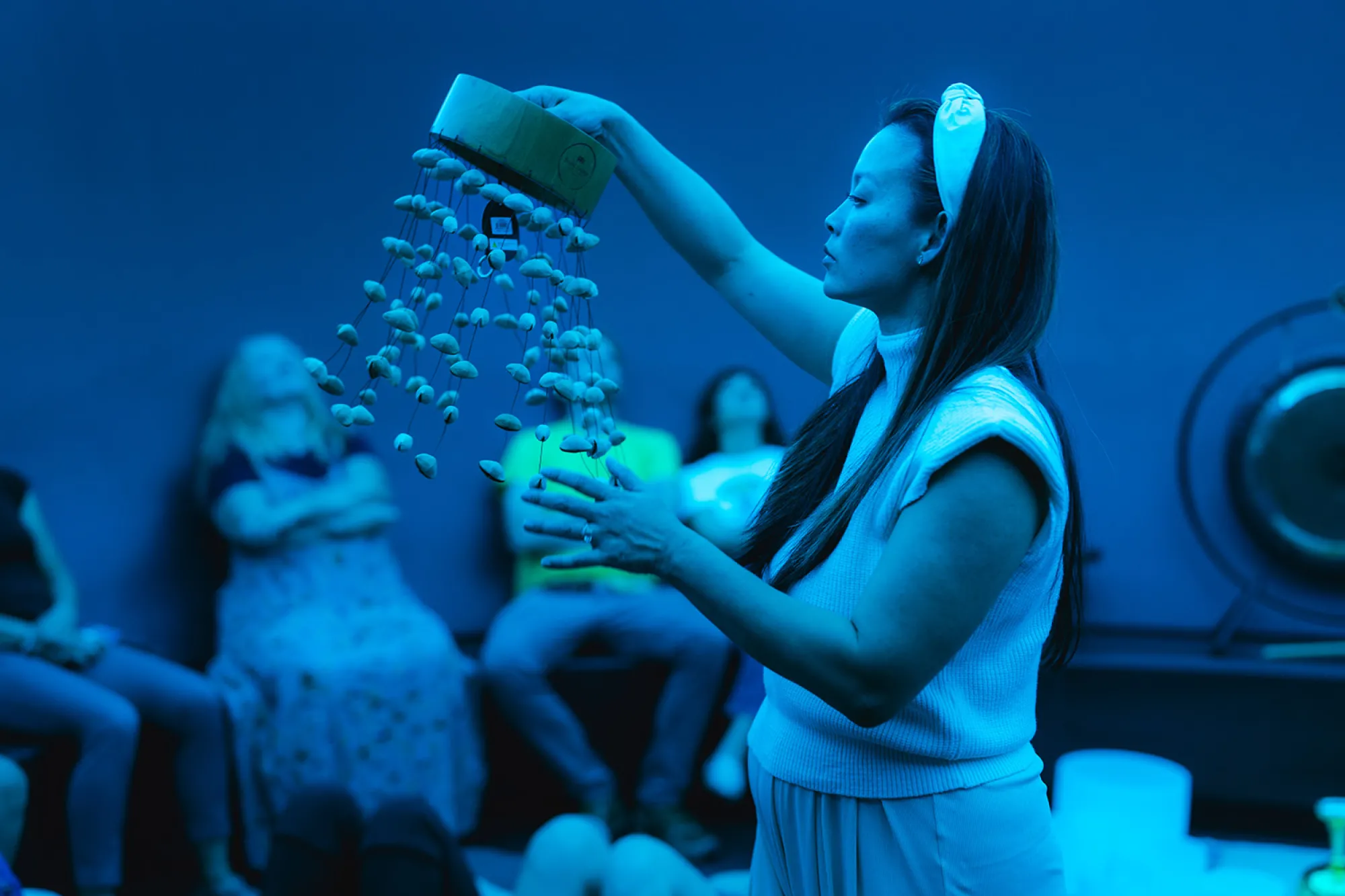The Healing Power of Art
Landmarks’ programs and artworks throughout campus support students’ well-being

by Kathleen Brady Stimpert
Mental health issues among children, teens and young adults have surged during the past 15 years. While various theories attempt to explain this rise, most researchers agree that the global pandemic exacerbated problems for already struggling youths. Consider these statistics: In 2010, 11% of UT students were diagnosed with anxiety, and 8% with depression. By 2019, those numbers had climbed to 14% and 11%, respectively. By 2023, 60% of undergraduate and graduate students in Texas reported experiencing heightened symptoms of serious psychological distress. While these figures are concerning, the University offers a wide range of resources to support student well-being. One unexpected — yet valuable — resource for students is Landmarks, UT’s public art collection. As emerging science increasingly demonstrates, art is not just a visual expression of the human condition; it has the potential to literally change us, benefiting our health in ways that we are only beginning to understand.
Historically, research has focused on the psychological benefits of engaging with the arts, with the rise of art therapy during the 1940s providing early support for this idea. However, more recent data points to an even broader impact, revealing both psychological and physiological benefits. A 2019 World Health Organization report underscored the role of art-based interventions in treating a wide range of conditions. Drawing from more than 3,000 studies, it detailed how art can alleviate pain, lower stress hormones, boost the immune system and more. A recent survey conducted by the Institute for Learning Innovation yielded similar results. After a two-hour museum visit, 1,900 participants were asked about the intellectual, social and physical aspects of their experience. More than 95% reported feeling “relaxed,” “peaceful,” “healthier” and “physically and mentally restored,” with a renewed “appreciation for the best of human and natural creation.”
From enhancing cognition and reducing anxiety to lowering blood pressure, art has proved to be an effective tool for treating a wide range of mental and physical conditions. As a result, physicians worldwide are rethinking traditional care protocols. Hospitals, retirement homes, schools and prisons are incorporating art and other creative practices into rehabilitation efforts. Esteemed institutions such as Johns Hopkins University and The Aspen Institute are integrating “cultural prescriptions” alongside conventional medicine. The National Gallery of Scotland is even using arts engagement to help combat addiction. While more long-term studies are needed, the success of these initiatives underscores the strong connection between art and health, even as our understanding of the mechanisms behind it continues to evolve.
Advances in biomedical technology have transformed the current paradigm and catalyzed the emergence of an exciting new field — neuroaesthetics. This growing branch of neuroscience explores how our minds and bodies respond to aesthetic experiences, such as viewing art, listening to music or engaging in other forms of creative expression. Using MRIs to study brain activity in those creating or observing art, scientists have found increased activation in the frontal cortex, the region associated with emotions, memory, creativity and sensory integration. Even more remarkable is the co-activation of areas of the brain that typically do not work together. Systems governing pleasure and reward are stimulated alongside those managing perception, motor circuits and knowledge. In other studies, wearable “smart” devices have detected shifts in body temperature, heart rate and other biomarkers. Additionally, research reveals that neurotransmitters such as dopamine and serotonin are released during aesthetic experiences, offering mood support and pain relief, among other benefits. These groundbreaking findings demonstrate how art stimulates multiple neurological and physiological systems, affecting our biology down to the cellular level.
Notably, much of the progress in neuroaesthetics has been driven by universities and other institutions of higher learning. At Drexel University, researchers discovered that just 45 minutes of artmaking significantly reduced levels of the stress hormone cortisol. Scientists at UC Berkeley found that engaging with the arts led to lower levels of inflammatory cytokines and improved immune function. Closer to home, a collaboration between UT’s College of Fine Arts and the Livestrong Cancer Institutes showed enhanced empathy among students and patients who participated in an art and storytelling program.
Landmarks recognizes the importance of these findings and, in recent years, has developed several new programs focused on mental and physical health. At the start of the pandemic, we launched a virtual meditation experience inside James Turrell’s Skyspace, allowing students to engage with the calming light sequence online, anytime and from anywhere. We introduced a wellness series that includes breathwork sessions and sound bath meditations featuring singing bowls, gongs and chimes. In collaboration with the Fitness Institute of Texas, Landmarks designed a tour that combines physical exercise with select works from the collection. We have also partnered with professors at Dell Medical School to create slow-looking exercises that enhance empathy, improve observation skills and help pre-med students manage stress.

In 2023, Landmarks introduced our most popular wellness program to date: Paws for Public Art. Developed in partnership with the Longhorn Wellness Center, the annual event combines art and animals — both proved to reduce stress. Timed to coincide with midterm exams, it offers much-needed mental health breaks when students need them most. Each spring, miniature goats, hedgehogs, rabbits, chicks and piglets are placed near iconic works from the Landmarks collection. As students eagerly await interaction with the animals, Landmarks shares insights about the art through staff conversations and digital resources, while representatives from the Longhorn Wellness Center offer sleep kits and information on sleep hygiene, social connection and self-care. These distinctive programs, along with our award-winning collection, make Landmarks an essential part of the Longhorn experience and a vital resource for student health.
Depression, anxiety and other psychological challenges are often complex and require a multifaceted approach. While arts engagement alone cannot resolve these issues, the role that Landmarks plays is not insignificant. Students frequently share that a visit to the Turrell Skyspace provided the perfect relief after a stressful day, or that a particular sculpture inspired self-reflection or a moment of shared connection. These experiences highlight the value that Landmarks brings to both campus and community and reaffirms our belief in the power of art to both heal and transform. As Stone Tejada, a recent UT graduate, explained: “The Landmarks collection replenishes me. It reminds me to slow down and appreciate the beauty around me. As a student, having the collection on campus gives me the ability to take a deep breath and remember that we are all capable of creating beautiful things. That peace has been the lifeblood of my years at UT.”

Kathleen Brady Stimpert is the deputy director at Landmarks. This essay originally appeared in the 2025 updated Landmarks guide.

